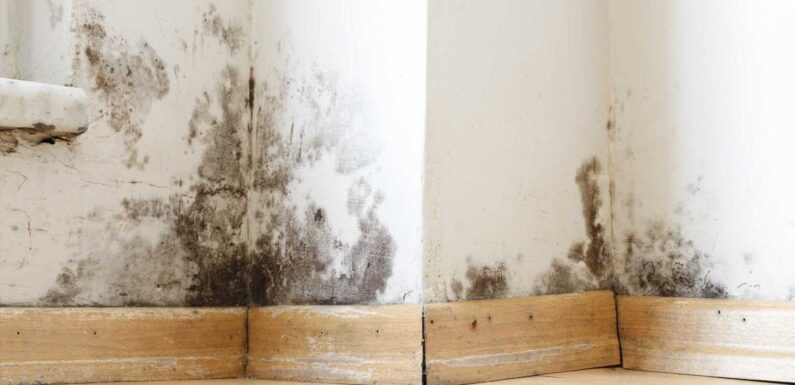
A GADGET we all have in our homes can be used as a simple tool to spot condensation and stop mould in its tracks.
Condensation conscious Brits can make use of their old Covid thermometers to fight damp and mould in their homes this winter.
Millions of worried people purchased the temperature-measuring gadgets during the global health pandemic as the nation endured a series of strict lockdowns.
Many of them are now gathering dust in drawers, but one expert has revealed how they could become a secret weapon in the war against household moisture.
Condensation is the biggest driver of mould growth in our homes.
The fungus is usually found on animal or plant matter, building materials like wood and plasterboard, and furnishings like curtains, carpets and boxes.
Read more in money

Seven million families to gain from huge change to child benefit

I tried heated throws – they're cheap to run but I was very disappointed
While it has a major role in the ecosystem of the earth it can be dangerous in the home and costly to remove.
The NHS says the problem with mould is that it produces allergens, irritants and, sometimes, toxic substances.
When these are inhaled or they get into the skin, it causes nasty symptoms.
At first, these toxins may not cause any harm at low levels. But if they are consistently in the air, it starts to cause side effects.
Most read in Money

How two mums saved £166 a week by switching from contactless to cash

Asda trick to get discounts revealed as customer bags £10 of shopping for 10p

DWP to make big change to services for those on benefits next week

I tested coffee machines under £50 – the winner was cheap and better than Costa
People who live in homes with mould are more likely to have respiratory problems, infections, allergies and asthma.
But mould can also damage your home.
So the key thing to do is try and ensure that you don't invite mould into your home by minimising condensation.
Ryan Harrison of energyadvicehelpline.org urges those with wetness on their windows and walls to dig out their thermometers and start fighting back against poor living conditions.
He said: "Millions of people in the UK are struggling with this situation during the colder months, leaving their windows full of condensation and encouraging mould to form – especially behind furniture and in the corners of rooms.
"The best way to tackle this is to understand the process that's at work and find a way to stop it – and that's where your old thermometer comes in.
"The higher the moisture content in your home, the harder it is to heat your property.
"Condensation is created where this moist air comes into contact with a cold surface such as a window or wall.
"The first thing to do is to cut down on the moisture you produce. The main sources within the home are showers, baths, cooking and laundry.
"It's also worth remembering that people produce a huge amount of moisture – around a pint-and-a-half a day – which is going straight into the atmosphere within your four walls.
"Taking steps such as always putting lids on pans when cooking, not drying clothes on radiators and opening the window when having a shower are all worthwhile.
"But if you can also identify the cold spots in your home, it will help you address them and make it harder for condensation to form."
Ensuring your home is properly insulated is a major step towards banishing condensation and mould, according to Ryan.
Loft and wall insulation will address these problems, and there are grants available to some homeowners to provide this free of charge.
How can I get free insulation?
The government's Great British Insulation Scheme offers free or cheaper insulation to reduce the energy bills of around 400,000 homes.
You might get support if your home has an EPC of D-G, or your home is in a council tax band A-D in England or A-E in Scotland or Wales.
You can check your eligibility by visiting https://www.gov.uk/apply-great-british-insulation-scheme.
A separate scheme called The Energy Company Obligation (ECO) scheme is designed for those on low incomes.
You might be eligible for help if you live in private housing and get one of the following benefits:
- Tax credits
- Universal Credit
- Pension Credit
- Income support
- Income-based jobseeker's allowance (JSA)
- Income-related employment and support allowance (ESA)
- Child benefit
- Housing benefit
If you own your house, it must have an energy efficiency rating of D, E, F or G to be eligible.
If you rent from a private landlord, the house must have an energy efficiency rating of E, F or G to be eligible. You must have the owner’s permission to do the work.
Read more on The Sun

I lost £635 by selling an iPhone on eBay after buyer claimed device was fake

Asda trick to get discounts revealed as customer bags £10 of shopping for 10p
Contact your local council to find out if they're taking part in the ECO scheme, or contact an energy supplier directly.
You can find contact details of suppliers who are taking part in the scheme on the Ofgem website.
Source: Read Full Article
